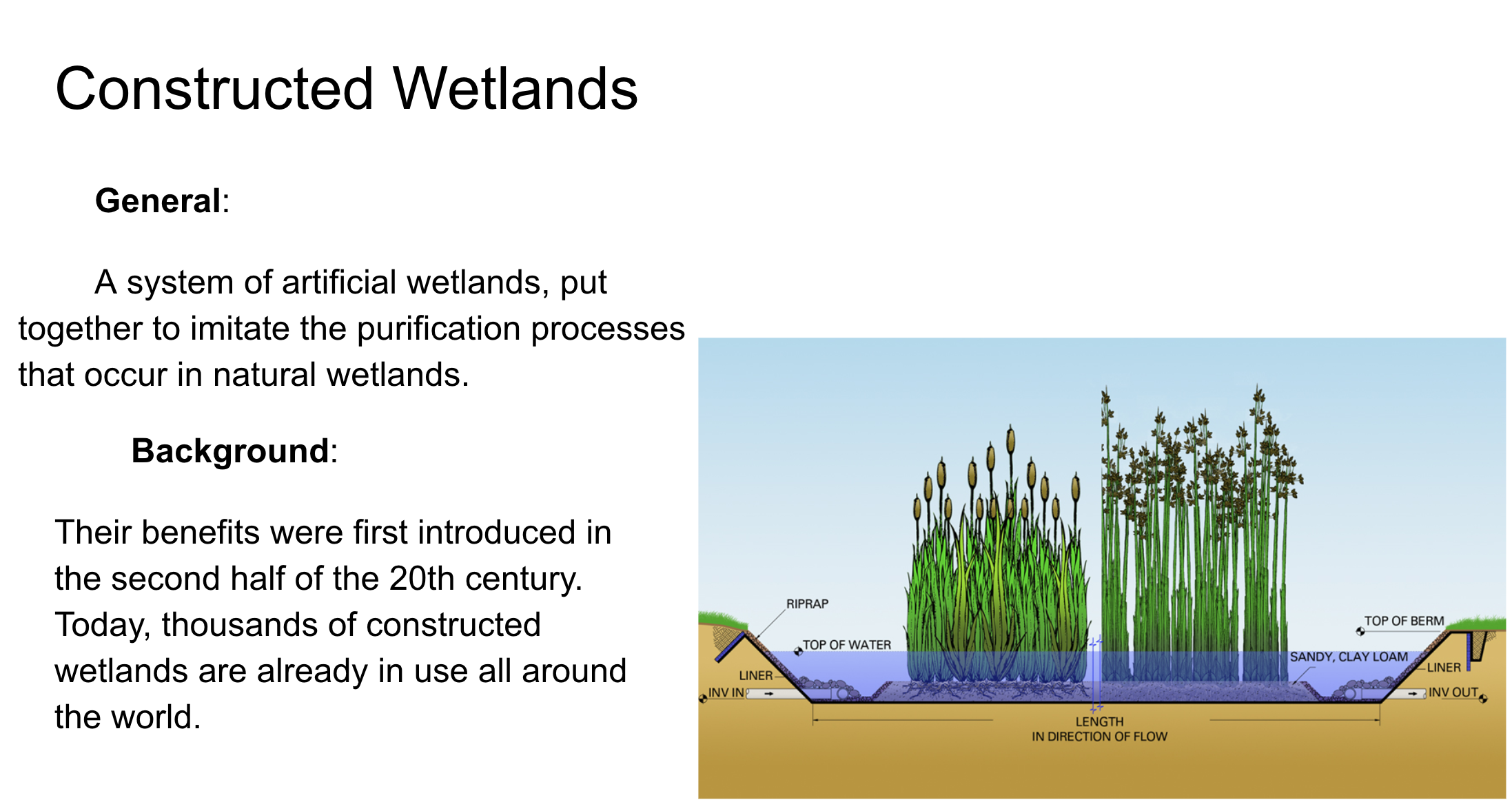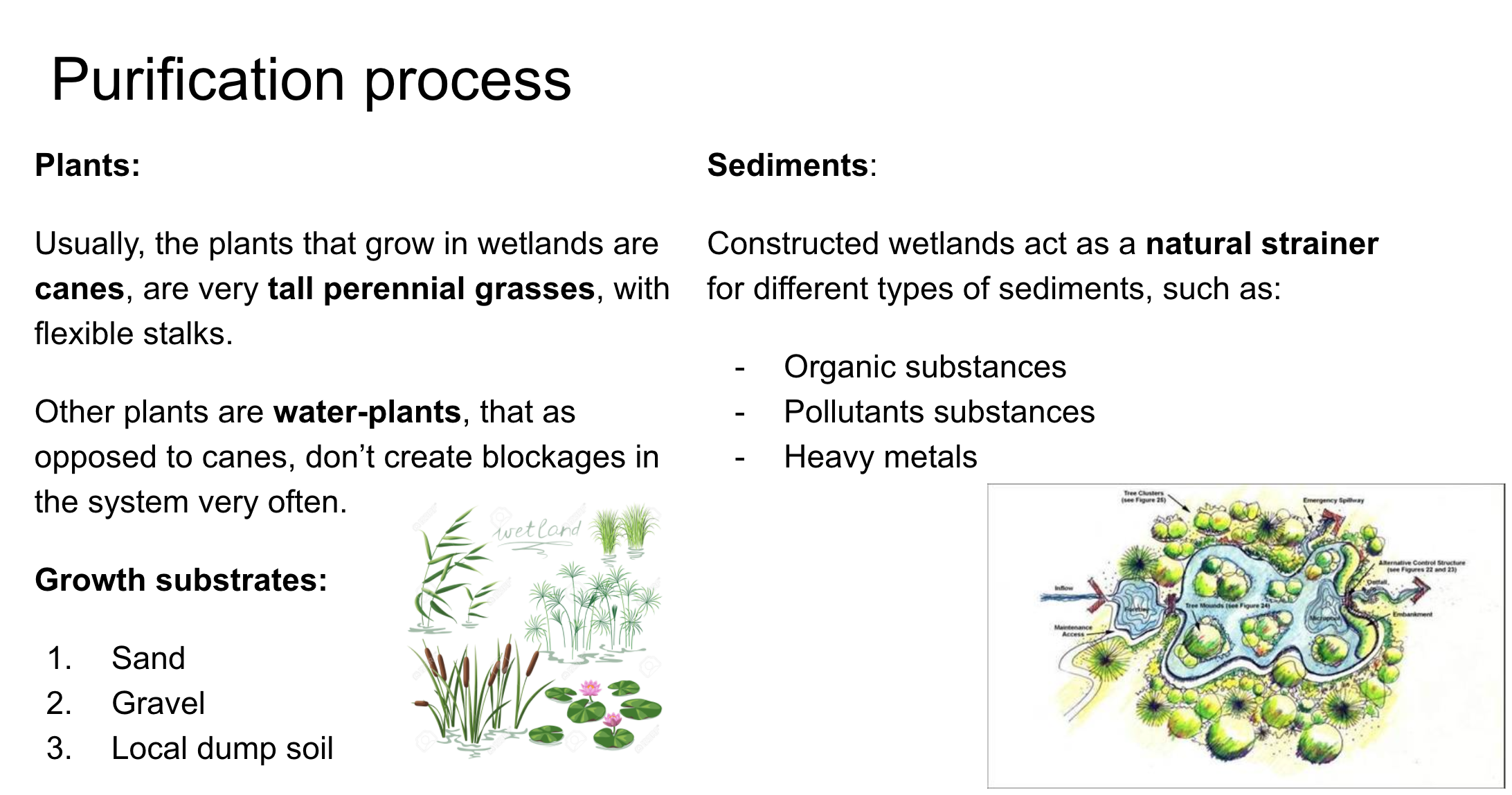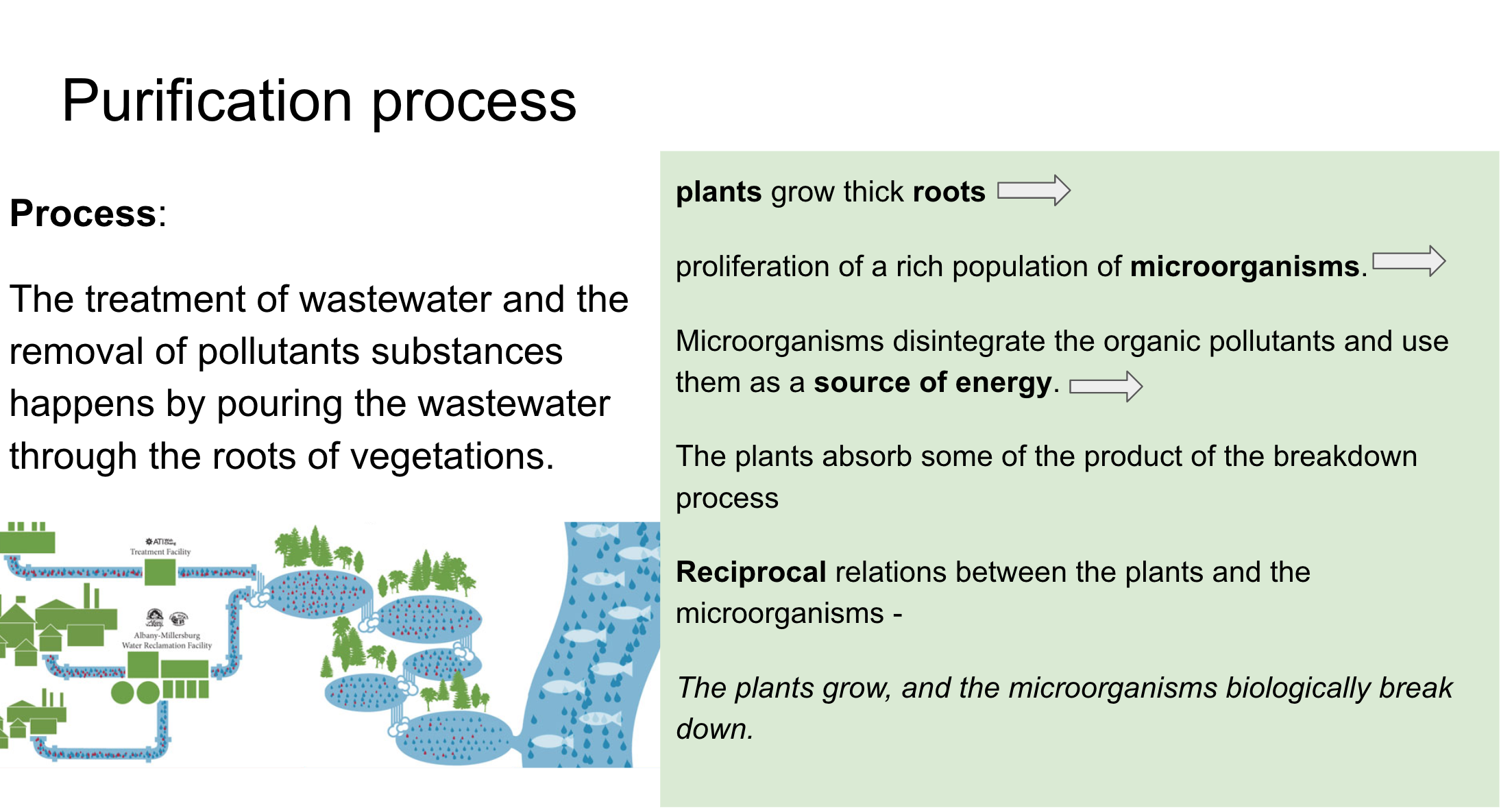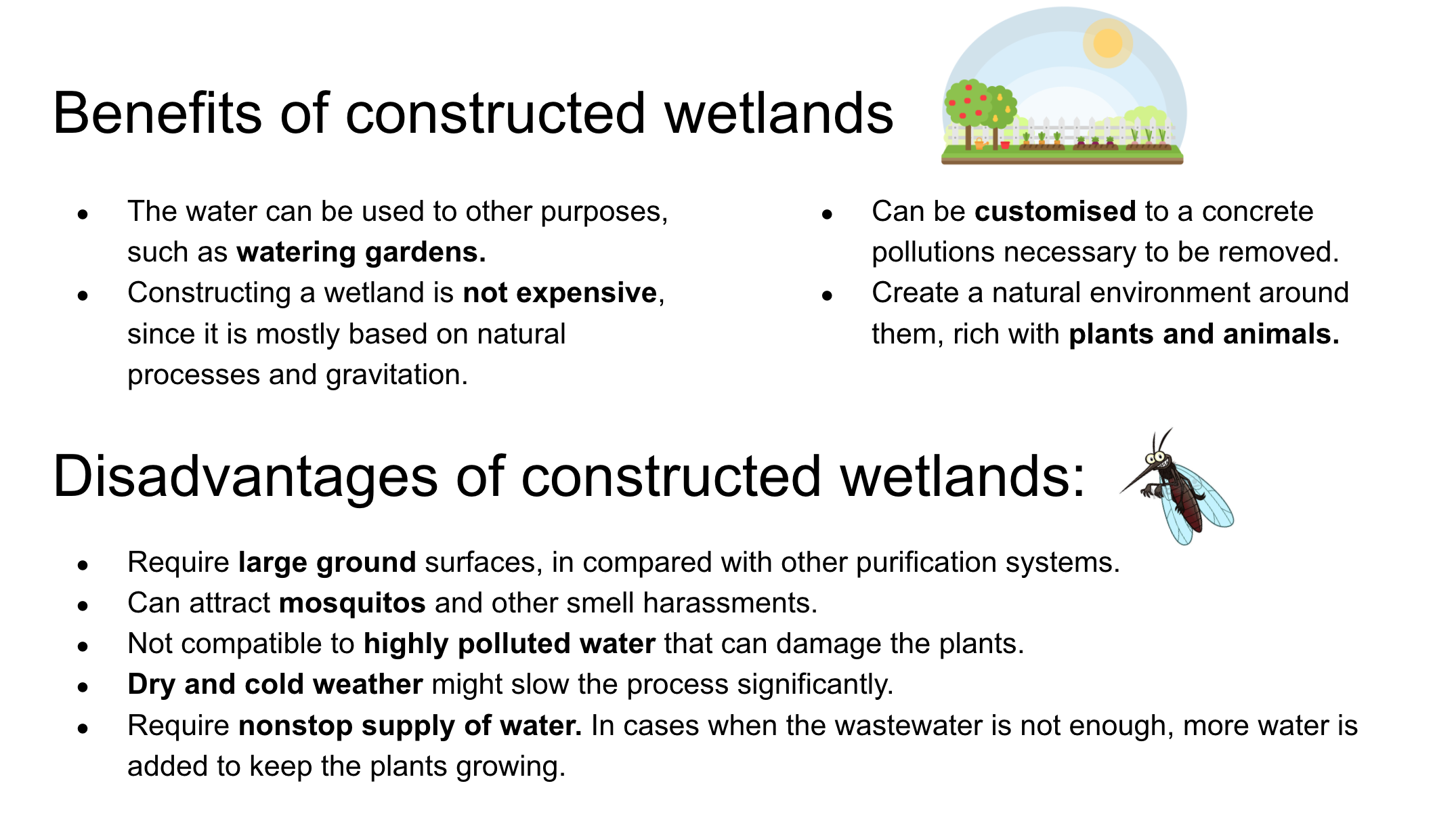Water system presentation
Constructed wetlands
Constructed wetland is a system of artificial wetlands, put together to imitate the purification processes that occur in natural wetlands. Constructed wetlands act as a natural strainer for different types of sediments, such as organic substances, pollutants substances and heavy metals.
Their benefits were first introduced in the second half of the 20th century, after numerous studies were published for the first time. Today, thousands of contracted wetlands are already in use all around the world.
The treatment of wastewater and the removal of pollutants substances happens by pouring them through the roots of vegetations that grow in the constructed wetlands. The Usually, the plants that grow in wetlands are canes, are very tall perennial grasses, with flexible stalks. The canes create channels in the growth substrate, that allow oxygen to penetrate in to the wastewater. Other plants are water-plants, that as opposed to canes, don’t create blockages in the system very often.
The growth substrate is usually made of sand, gravel and some local dump soil, that absorbs water. The plants grow thick roots, helping in the proliferation of a rich population of microorganisms. The microorganisms disintegrate the organic pollutants and use them as a source of energy. The plants absorb some of the product of the breakdown process, and so begin reciprocal relations between the plants and the microorganisms – The plants grow, and the microorganisms biologically break down.
The pace of the process depends on the environmental conditions: high temperature and high levels of oxygen speed the process, while high acidity levels delay it. Other factors are the amount of wastewater that flows and the pace of their flow between the constructed wetlands.
Benefits of constructed wetlands:
- The water can be used to other purposes, such as watering gardens.
- Constructing a wetland is not expensive, since it is mostly based on natural processes and gravitation.
- Can be customised to a concrete pollutions necessary to be removed.
- Create a natural environment around them, rich with plants and animals.
Disadvantages of constructed wetlands:
- Require large ground surfaces, in compared with other purification systems.
- Can attract mosquitos and other smell harassments.
- Not compatible to highly polluted water that can damage the plants.
- Dry and cold weather night slow the process significantly.
- Require nonstop supply of water. In cases when the wastewater is not enough, more water is added to keep the plants growing.



